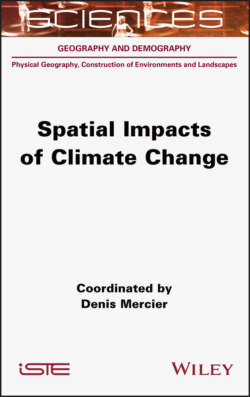Читать книгу Spatial Impacts of Climate Change - Denis Mercier - Страница 26
2.3. Melting of the marine cryosphere 2.3.1. The melting of the Arctic sea ice
ОглавлениеBetween 1979 and 2019, the Arctic sea ice lost 12.9% of its surface area per decade, representing a loss of half of its surface area by the end of the melt season (see Figure 2.2). As a result, in September 2019, Arctic sea ice occupied just over 4 million km2, compared to almost 8 million km2 in 1979. This trend represented a loss of 82,400 km2 per year between 1979 and 2019. Beyond this four-decade trend,
Figure 2.2 shows that the melting of the sea ice has in fact slowed over the last 13 years (2007-2019).
The year 2012 corresponds to the year when the reduction in the ocean surface area covered by Arctic sea ice was the most marked in the last 40 years (see Figures 2.2 and 2.3). It was mainly visible along the Siberian coast, clearing the Northeast Passage. Similarly, the sea ice disappeared from the Beaufort Sea along the coasts of Canada and northern Alaska in the summer of 2012. Sea ice still occupies the oceanic part between the North Pole, northern Greenland and Ellesmere Island, for atmospheric and oceanic reasons related to the Beaufort Gyre. This spatial asymmetry in the extension of the Arctic sea ice is increasing with contemporary global warming.
Figure 2.2. Average Arctic sea ice extent for the month of September between 1979 and 2019. Decade of decline of 12.9%. For a color version of this figure, see www.iste.co.uk/mercier/climate.zip
(source: National Snow and Ice Data Center).
Figure 2.3. Spatial extent of Arctic sea ice as of September 1, 1980, and on September 1, 2012, the year in which the extension was the least in the last four decades. For a color version of this figure, see www.iste.co.uk/mercier/climate.zip
(source: The Cryosphere Today)
In addition to the loss of surface area, the average thickness of the Arctic sea ice has decreased by half, from 3 m to 1.5 m. This is due to the spatial reduction of multi-year sea ice in favor of the young annual sea ice (AMAP 2017). Thus, the younger, thinner Arctic sea ice is also more fragile, more brittle, and more easily displaced from the Arctic Basin via Fram Strait by transpolar drift (see Figure 2.4). This positive feedback loop helps to understand the evolutionary process of this reduction in the spatial extent of Arctic sea ice (Weiss 2008). According to the latest IPCC report (IPCC 2019), the proportion of multi-year ice that is at least five years old decreased by about 90% between 1979 and 2018.
Figure 2.4. (a) Thermodynamic feedback loops; (b) direct mechanics; and (c) indirect mechanics, all explaining the melting of the Arctic sea ice. For a color version of this figure, see www.iste.co.uk/mercier/climate.zip
(source: modified from Weiss 2008)
